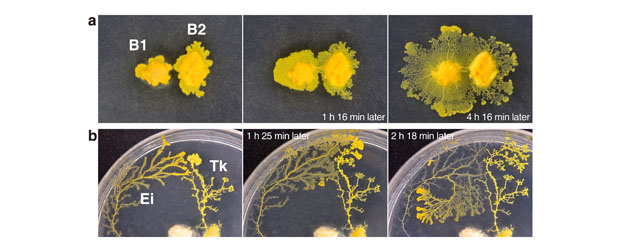Accueil
Scoping magnetic fields out for prevention (Vol. 49 No.5-6)

A new study reveals how to best evaluate the circulation of magnetic fields around closed loops
Concerns about the effects of magnetic fields on human health require careful monitoring of our exposure to them. Mandatory exposure limits have been defined for electric and hybrid vehicle architectures, in domestic and work environments, or simply to shelter sensitive devices from unintended sources of magnetic disturbance. In a new study published recently, the authors develop a method for deriving an approximate value of the circulation around a loop of the magnetic field generated by the flow of electric current in an arbitrarily-shaped wire of a given length. In this study, the authors set out to adapt Biot-Savart’s law, which describes the magnetic field generated by finite wires, to evaluate the circulation of such fields around a closed path or loop. This led the authors to a mathematical formula that, as the finite wire thickness decreases to zero, becomes identical to one of their recent research results expressing the magnetic field circulation as a function of the wire current and of the solid angles between the circulation path and each of the conducting wire’s endpoints.
J. M. Ferreira and J. Anacleto, The magnetic field circulation counterpart to Biot-Savart’s law, Eur. Phys. J. Plus 133, 234 (2018)
[Abstract]
Self-extension model of slime mold’s allorecognition behaviour (Vol. 49 No.5-6)

When slime molds encounter an allogeneic individual, they judge whether to fuse or avoid it. This decision can be made without coming in contact with each other.
Slime molds move, feed, and grow during single-celled amoeboid stage—plasmodium. They can divide into multiple individuals and fuse. In this study on Physarum rigidum, an interesting behaviour was observed when they encountered an allogeneic individual. The plasmodia stopped their movement, came in contact with each other at the cell membrane surface, and then decided their actions. If they judge the encounter can become “self”, they fused, and if they recognize it as “non-self”, they avoided each other. This allorecognition behaviour can sometimes take several hours. More importantly, this behaviour can occur without contact between cell membranes. It is impressive to observe plasmodia stay apart from each other and decide their behaviour. In our study, we clarified that this behaviour, i.e., non-contact allorecognition, occurs with the spread of slime sheath, which is hyaline mucus secreted by plasmodium. Plasmodium diffuses slime sheath as an information substance of “self” to the environment, and it can be called "self-extension".
M. Masui, S. Satoh and K. Seto, Allorecognition behaviour of slime mold plasmodium—Physarum rigidum slime sheath-mediated self-extension model, J. Phys. D: Appl. Phys. 51, 284001 (2018)
[Abstract]
Nonexistence of PT-symmetric gain-loss photonic quantum systems (Vol. 49 No.5-6)

Our common understanding of quantum mechanics relies on the Hamiltonian operator describing any quantum mechanical system to be Hermitian. This has been challenged 20 years ago by the discovery that, for an operator to possess real eigenvalues, it only needs to be invariant under combined parity-time (PT) symmetry operations. This had profound impact on photonics where potential landscapes with tailored gain and loss for electromagnetic waves can easily be implemented.
However, this is as far as the analogy to quantum mechanics can be taken. A straightforward implementation of gain-loss structures for quantum states of light - even for the most classical ones, coherent states - fails. As the authors show in this article, concatenating lossy and amplifying media turn coherent states into thermally broadened quantum states, whose first moments (i.e. their amplitudes) are retained, but whose variances are increased proportional to the amount of gain.
This shows that PT-symmetric quantum optics cannot be implemented within the prevailing paradigm of using distributed gain and loss. The wider consequence of this simple result hints at the limits of simulating quantum physics beyond wave mechanics using photonic quantum systems.
S. Scheel and A. Szameit, PT-symmetric photonic quantum systems with gain and loss do not exist, EPL 122, 34001 (2018)
[Abstract]
Better chemo drug adsorption onto targeted delivery capsules (Vol. 49 No.5-6)

New study demonstrates adsorption of chemotherapy drugs onto active carbon delivery capsule can be enhanced with aluminium atom inclusions
The efficacy of chemotherapy treatment depends on how effectively it reaches cancerous cells. Increasing targeted delivery could mean decreasing side effects. Scientists are enhancing methods of selectively transmitting active chemotherapy agents and reducing their toxicity by encapsulating chemo drugs into active carbon used as the targeted delivery device. In a new study published recently, the authors have demonstrated that adding minute amounts of aluminium atoms onto activated carbon atoms helps increase the adsorption onto the delivery carbon capsule of a standard chemotherapy drug, called 5-Fluorouracil (5-FU). This drug is typically used for stomach, colorectal, neck and head cancer treatments. This model could lead to more effective and convenient cancer treatments with fewer side effects by encapsulating the chemo drug into the active carbon, so that it can be taken orally.
G. Román, E. Noseda Grau, A. Diaz Compañy, G. Brizuela, A. Juan, and S. Simonetti, A first-principles study of pristine and Al-doped activated carbon interacting with 5-Fluorouracil anticancer drug, Eur. Phys. J. E 41, 107 (2018)
[Abstract]







